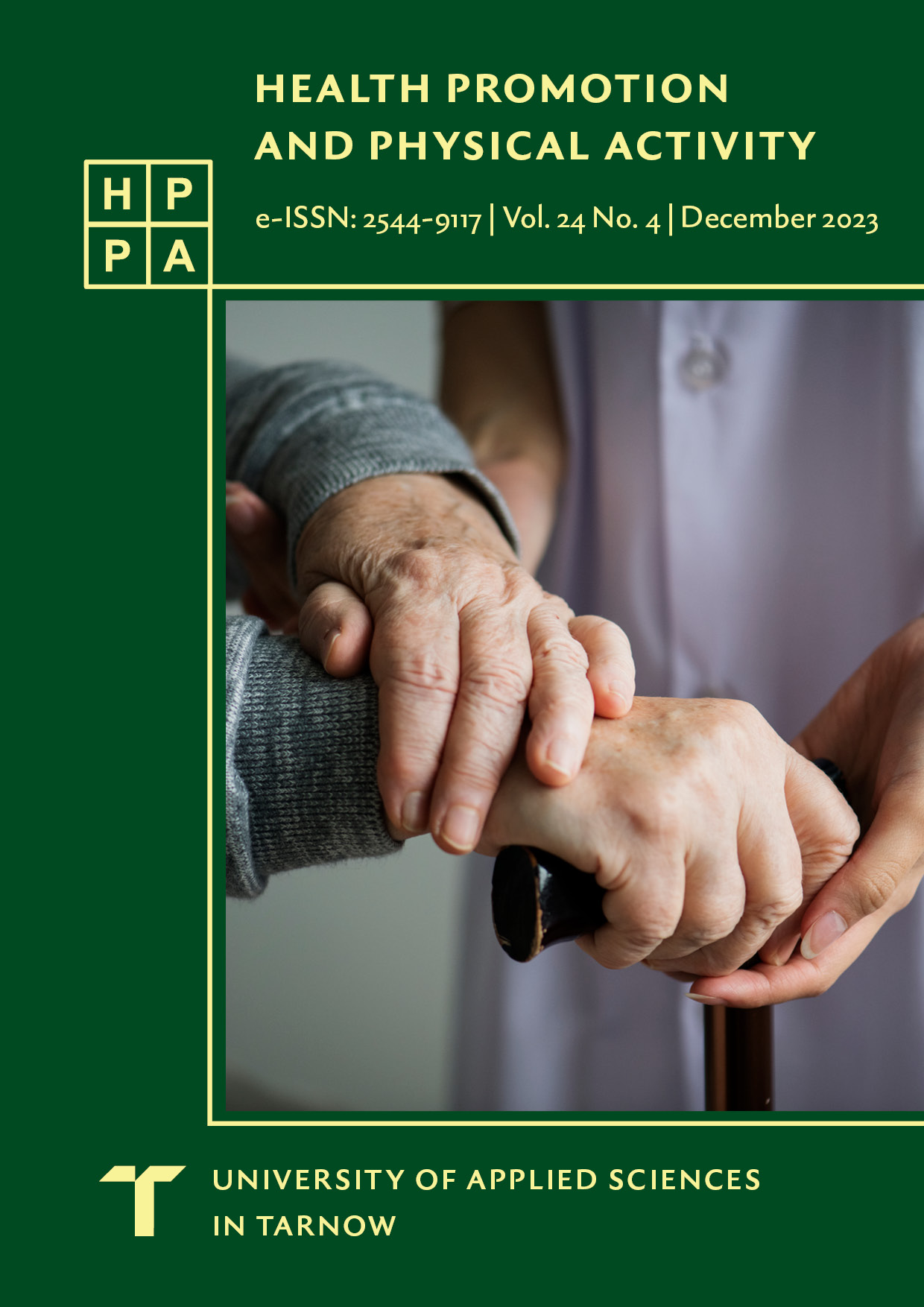A new hand dynamometer activforce isometric muscle activation on single joint muscle force of volleyball players
DOI:
https://doi.org/10.55225/hppa.548Keywords:
isometric force, peak, average, volleyball playersAbstract
Isometric muscle activation of single joint to volleyball players is critic on sport performance to produce potential muscle force, however isometric measurement limited in isokinetic muscle activity measurement of volleyball players. Indeed, hand dynamometers commonly use in various body isometric force. Professional volleyball players age 16.23 ± 0.59 yr, body mass 60.22 ± 4.64 kg, hight 1.69 ± 0.04 m participated to peak and average isometric force measurement over 8 week pre and post test. Accordingly, single joint muscle force production measurement of volleyball players tested on isometric muscle activation using a new hand dynamometer activforce 2. Isometric muscle activation tests consisted of 24 body region from upper and lower compartment. For this isometric muscle action test detected on peak force outcomes (SEM: 37.90; CV: 1.79) and average force outcomes (SEM: 33.62; CV: 1.84). The high isometric muscle action joint loading performing mechanical test application recommended on athletic population to using isometric potential high contraction model by strength training performance separately in-season and off-season measurement modeling. Conclusion, peak and average force production progressive isometric modeling of volleyball athletes worked to current sport–health condition. As out, conclusion must be advanced isometric force measurement proper work in sport-specific tasks. The proper isometric force must be repeat sport performance outcome in different sport modalities.
Downloads
References
Azeem K, Zemková E. Effects of ısometric and ısotonic training on health-related fitness components in young adults. Applied Sciences. 2022;12(17):8682. doi: 10.3390/app12178682. DOI: https://doi.org/10.3390/app12178682 Google Scholar
Hoffman B. Functional isometric contraction. CreateSpace Independent Publishing Platform. 2012. Google Scholar
Comfort P, Jones PA, Thomas C, Dos’Santos T, McMahon JJ, Suchomel TJ. Changes in early and maximal isometric force production in response to moderate- and high-load strength and power training. J Strength Cond Res. 2022;36(3):593-599. doi: 10.1519/JSC.0000000000003544. DOI: https://doi.org/10.1519/JSC.0000000000003544 Google Scholar
American College of Sports Medicine. American College of Sports Medicine position stand. Progression models in resistance training for healthy adults. Med Sci Sports Exerc. 2002;34(2):364-80. doi: 10.1097/00005768-200202000-00027. DOI: https://doi.org/10.1097/00005768-200202000-00027 Google Scholar
Stone M, Plisk S, Collins D. Training principles: Evaluation of modes and methods of resistance training – a coaching perspective. Sports Biomech. 2002;1(1):79-103. doi: 10.1080/14763140208522788. DOI: https://doi.org/10.1080/14763140208522788 Google Scholar
Lum D, Joseph R, Ong KY, Tang JM, Suchomel TJ. Comparing the effects of long-term vs. periodic ınclusion of ısometric strength training on strength and dynamic performances. J Strength Cond Res. 2023;37(2):305-314. doi: 10.1519/JSC.0000000000004276. DOI: https://doi.org/10.1519/JSC.0000000000004276 Google Scholar
Andersen LL, Aagaard P. Influence of maximal muscle strength and intrinsic muscle contractile properties on contractile rate of force development. Eur J Appl Physiol. 2006;96(1):46-52. doi: 10.1007/s00421-005-0070-z. DOI: https://doi.org/10.1007/s00421-005-0070-z Google Scholar
Jaric S. Force-velocity relationship of muscles performing multi-joint maximum performance tasks. Int J Sports Med. 2015;36(9):699-704. doi: 10.1055/s-0035-1547283. DOI: https://doi.org/10.1055/s-0035-1547283 Google Scholar
Karagiannopoulos C, Griech S, Leggin B. Reliability and validity of the activforce digital dynamometer in assessing shoulder muscle force across different user experience levels. Int J Sports Phys Ther. 2022;17(4):669-676. doi: 10.26603/001c.35577. DOI: https://doi.org/10.26603/001c.35577 Google Scholar
Andrews AW, Thomas MW, Bohannon R W. Normative values for isometric muscle force measurements obtained with hand-held dynamometers. Phys Ther. 1996;76(3):248-259. doi: 10.1093/ptj/76.3.248. DOI: https://doi.org/10.1093/ptj/76.3.248 Google Scholar
Maxwell JA. Using qualitative methods for causal explanation. Field Methods. 2004;16(1):243-264. doi: 10.1177/1525822X04266831. DOI: https://doi.org/10.1177/1525822X04266831 Google Scholar
Downloads
Published
How to Cite
Issue
Section
License
Copyright (c) 2024 Yeliz Kahraman

This work is licensed under a Creative Commons Attribution-ShareAlike 4.0 International License.









